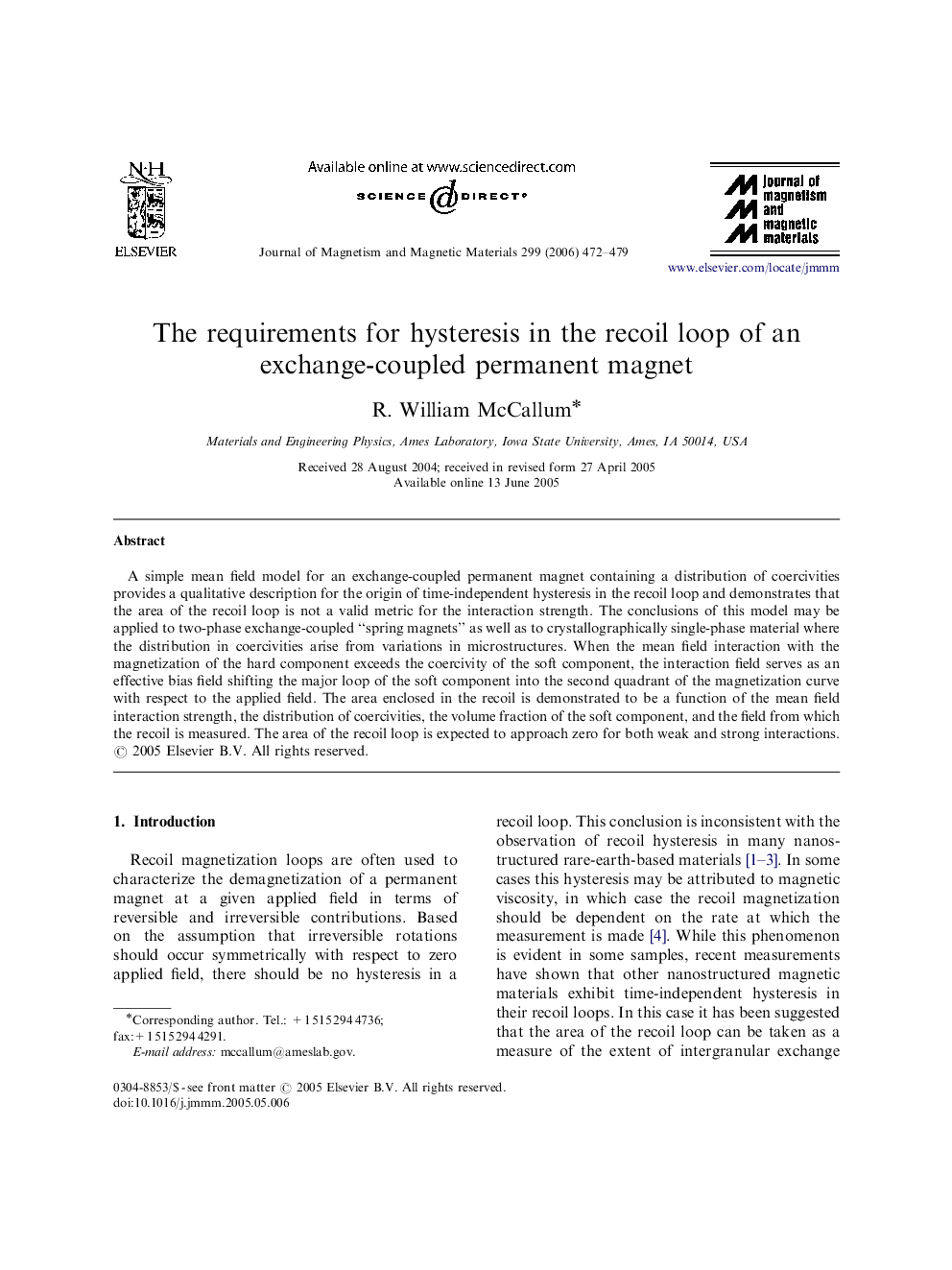| Article ID | Journal | Published Year | Pages | File Type |
|---|---|---|---|---|
| 1805410 | Journal of Magnetism and Magnetic Materials | 2006 | 8 Pages |
A simple mean field model for an exchange-coupled permanent magnet containing a distribution of coercivities provides a qualitative description for the origin of time-independent hysteresis in the recoil loop and demonstrates that the area of the recoil loop is not a valid metric for the interaction strength. The conclusions of this model may be applied to two-phase exchange-coupled “spring magnets” as well as to crystallographically single-phase material where the distribution in coercivities arise from variations in microstructures. When the mean field interaction with the magnetization of the hard component exceeds the coercivity of the soft component, the interaction field serves as an effective bias field shifting the major loop of the soft component into the second quadrant of the magnetization curve with respect to the applied field. The area enclosed in the recoil is demonstrated to be a function of the mean field interaction strength, the distribution of coercivities, the volume fraction of the soft component, and the field from which the recoil is measured. The area of the recoil loop is expected to approach zero for both weak and strong interactions.
